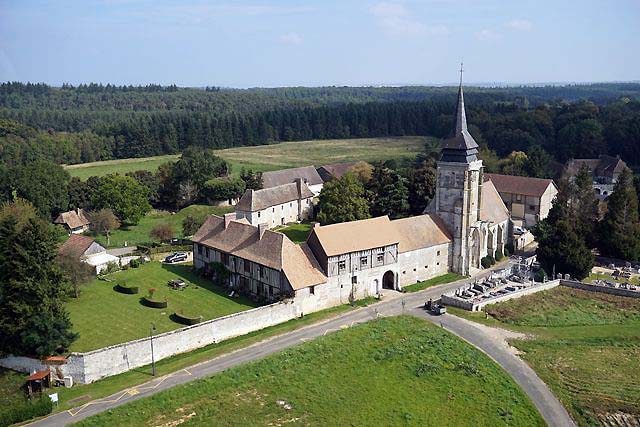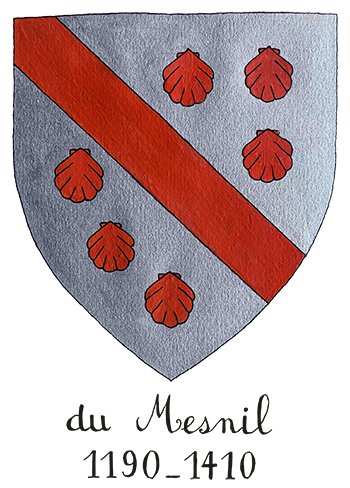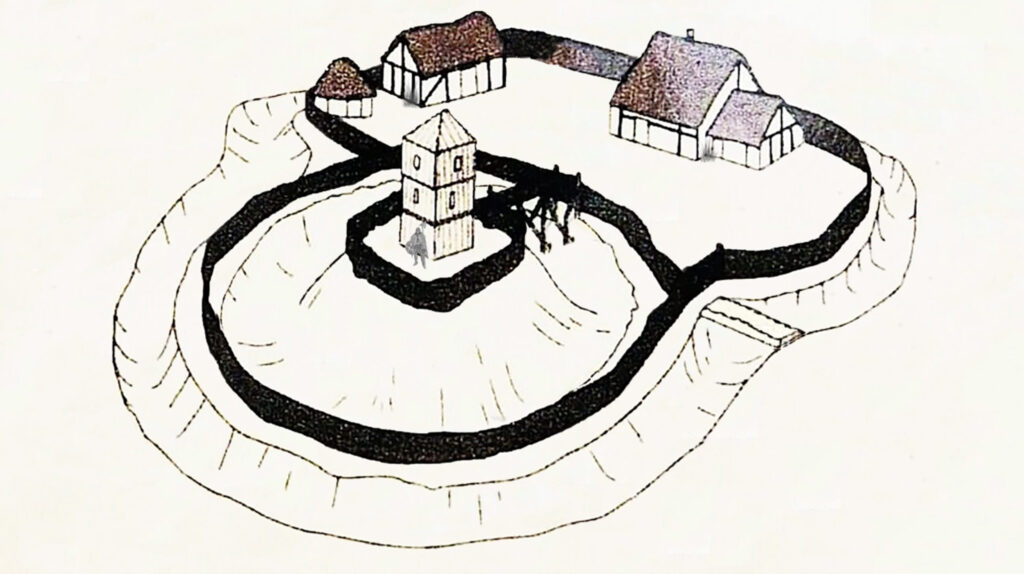The Viking origins of Normandy
The son of Charlemagne, Louis I, known as the Pious succeeded him in 814. As the only surviving legitimate son, he inherited the entire empire. However, his reign was not a smooth one, particularly because of the revolts of his own sons and the Viking raids that came to cause unrest and disorder in France.
Historians believe that the first raids by the " Northmen " or " Nortmanni " on Frankish lands took place at the very end of the 8th century, while Charlemagne was still alive. These Vikings did not seek to take over territories but to seize the wealth of abbeys, cities and lordships or to capture important personalities in order to exchange them for ransoms. The disadvantaged were not spared, however, as they were enslaved.
Their raids were quick and deadly. Skilled navigators, they managed to sail up the rivers in order to quickly reach the cities and attack them by surprise. If, at the beginning, they attacked the coastal regions, their incursions were made further and further inland.
Towards the middle of the 9th century, the Vikings' ambitions changed. They have the project to install colonies within the Frankish kingdom. Paris was besieged several times. Indeed, the country suffers from both a dying economy and a great insecurity due to the multiplication of Norman raids.
In 911, the signature of the " Treaty of Saint-Clair-sur-Epte " marks the birth of the County of Normandy led by Rollon who took the title of Jarl of the Normans.
Le Mesnil Jourdain
Mesnil-Jourdain is mentioned for the first time in 1190 as Maisnilum Jordani.
Toponyms with the word Mesnil are quite frequent in the 11th and 12th centuries. On the other hand, the name Jordani is only used from the beginning of the 12th century following the first crusade. This man's name would come from the river Jordan.
In 1190 Geoffroy du Mesnil, lord of Mesnil Jourdain, built a castle of which only the feudal mound surrounded by a dry moat remains.
Behind the church of Notre-Dame, adjoining and inseparable from the manor of Hellenvilliers, both forming a unique ensemble in Normandy, stands a Louis XIII style dwelling to which a feudal mound with foundations from the 12th century is surprisingly preserved.

La Motte Féodale

A motte castraleoften called " motte féodale " is a particular type of fortification which was widely used in the early Middle Ages. Middle Ages. It is composed of a embankment of voluminous and circular earth, the mound.
There are several forms of construction of these structures in all regions of Europe. The motte castrale is replaced by the stone castle before the end of the Middle Ages, during the Renaissance of the XIIth century which sees the triumph of thephilippic architecture.
In most cases, the mound was surrounded by a ditch, the top being occupied by a strong palisade. A wooden fortress was built there with a watchtower similar to a dungeon. The mound can be considered as a primitive castle.
In Western Europe, in the tenth century, the Carolingian army proved too heavy to react to the rapid Viking raids. The defense was therefore organized locally around mottes, which were quick to build and used inexpensive materials available everywhere. Gradually, a warrior elite was created whose authority was materialized by the motte castrale.
The lord ensures the protection of a commercial or economic place (often a village) and the motte becomes a dominant element of the spatial organization of theyear 1000. It can also serve as a lordly residence.

"Concerning our motte, it is quite typical of the fortifications that appear at the end of the 11th century. Thus the ducal motte castles of Gisors and Château-sur-Epte were built in 1097. Later on, other mottes were built during the first quarter of the 12th century, notably during the war between Henri I Beauclerc and his brother Robert Courteheuse in 1105-1106 or during the French invasion of part of the Vexin in 1118-1119 or during the revolt of the barons against Henri I Beauclerc in 1123-1124.

It is therefore possible to hypothesize that the small castle of Mesnil-Jourdain was built at this period. It seems that this type of fortification is no longer built in our region after the middle of the 12th century.
It is therefore interesting that the toponym and the typology of the fortification are in agreement.


Contact us
Enjoy being outside during your stay! Soak up the sun, listen to great music, dive into the pool, dance the night away and sip your favorite cocktail.